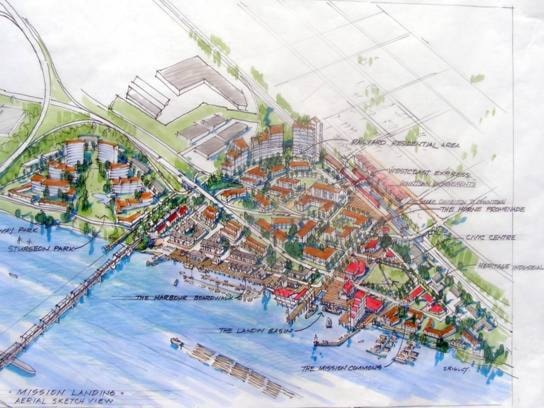The development of Mission’s waterfront hinges, in part, on individual property owners’ willingness to join forces and sell their land in larger chunks, Mayor Randy Hawes said.
To that end, Hawes said the district is hoping to organize a meeting among those who own developable land on and near the waterfront within the coming months.
So far, the long-sought-after development of the waterfront has eluded the district. Hawes attributes that to the difficulty companies and developers have in assembling large enough blocks of land to make it attractive to those looking to build or set up shop in the area.
“There are too many individual pieces of property with individual owners,” he said.
In addition to the Fraser River, Mission’s waterfront is blessed with highway and rail access, as well as relatively close proximity to the U.S.-Canada border. But while he said the district has regularly received inquiries from companies curious about moving to a waterfront location suitable for industry, those businesses have thus far found it impossible to obtain land.
“Waterfront is not something that many cities have and our waterfront can be extremely valuable if used the right way,” he said.
Instead of landowners seeking to individually profit from those companies seeking land, Hawes suggested a group approach is needed if the district’s waterfront is to finally entice larger companies to set up shop in the area.
“They need to come together to make land assembly much easier,” he said.
Hawes also said the district has to look at how to free up land in the area that is currently in the Agriculture Land Reserve, but which is of limited productivity or not well used.
“It is doing nothing, yet the ALR holds onto it like it’s the best land in the province,” he said.
Hawes suggested the district might be able to engineer a trade that would see land elsewhere placed in the ALR in order to allow for the removal of the waterfront properties. He also noted that there are permitted uses of ALR land that allow for agriculture-friendly businesses to operate.
The plans for the waterfront date back years. In 2006, the district developed a concept plan that envisioned a mix of commercial, residential and industrial uses. That was followed by a 2009 study on the possible constraints to redevelopment. Additional studies received by the district in 2010 and 2011 assured council that a residential and commercial development was viable under market conditions then.
